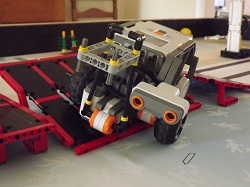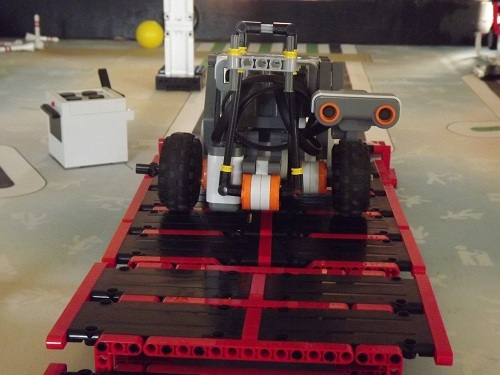When you walk in the room, who shows up for Read more →
At the Gaps, Go Slow to Go Fast
Posted Tuesday, December 4, 2012Allen Slade
In organizations, faster change is your only long term advantage. But sometimes, speed prevents people from making the change successfully. By going fast, you create errors and friction, causing the change to be less successful.
My sons are on a team in the FIRST Lego League robotics competition. They program a wheeled robot to hit levers, fling a ball and grab things. The final task is to drive up a ramp and park on a teetering platform.
The robot must be centered or the platform will tilt and the robot will fall off. The robot’s behavior is unpredictable, especially at gap between the ramp and the parking spot.
 When you are leading change, do you go too fast? Do you “program” your team to slam through obstacles as quickly as possible? You can go fast to go slow. Don’t be surprised if your change goes off track.
When you are leading change, do you go too fast? Do you “program” your team to slam through obstacles as quickly as possible? You can go fast to go slow. Don’t be surprised if your change goes off track.
The solution? Slow down at the gaps.
The robotics team reprogrammed the robot to climb the ramp slower. To jump the gap, they slowed the robot down even more. Jumping the gap is less violent and the robot is less likely to be thrown off kilter.
Bottom line: Go as fast as you need for change. But if your change is going off track, go slow to go fast.
As a wise change leader, you need to know when to go slow and when to go fast. At the major transition points, allow people time to make sense of the change they face. By taking the time for dialogue and insight, you can create intelligent change. Go slow to go fast, and you can increase the odds of reaching your goal safely.


